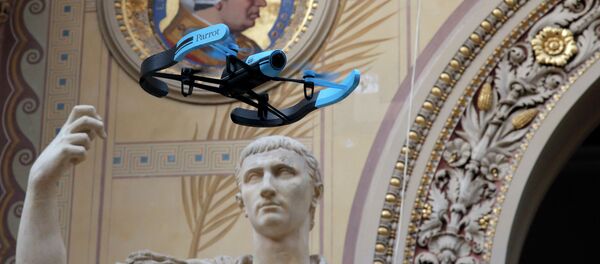"The first was piloting the drone, the second was filming, and the third was watching," the source said.
The three foreign nationals, aged 70, 54, and 36, were arrested in the Bois de Boulogne woods in western Paris, and can be held for questioning for up to 24 hours, according to the Associated Press.
— Al Jazeera PR (@AlJazeera) February 25, 2015
Al Jazeera has denied any wrongdoing, and its PR department released a short statement claiming journalists were working on a story about the recent drone scare in Paris when they were apprehended by police.
In recent days, unknown drones were spotted over major Paris landmarks, including the Eiffel Tower, the Louvre Museum, and the Bastille Monument, as well as the US Embassy. On Tuesday night, five UAVs were observed after 1:00 am. This echoed a January incident in which an unidentified drone was caught spying on the French President's Palace. Earlier in the month, other drones were sighted near French nuclear plants.
UAV flights are banned in the French capital, carrying a potential fine of $85,000 and a maximum of one year in prison. Police started an investigation into the mysterious sightings.
"The goal here is to scare people and attack the feeling of security of the nation," criminologist Christophe Naudin told USA Today. "Their message is that modern states are incapable of protecting their nation, their territory, their citizens."
The three journalists were arrested in a park on city's edge, far from the landmarks in central Paris, and it is not yet clear if they are involved in the night drone flights which have caused security concerns over the past few months.
The city has been especially vigilant ever since the terrorist attack on the headquarters of satirical magazine Charlie Hebdo, and French authorities have expressed concern that the unmanned aerial vehicles could represent a security threat.
Both French and US authorities have voiced their concerns that easy access to the technology could allow individuals to spy on military installations, or even deliver small explosive devices to high-priority targets.



